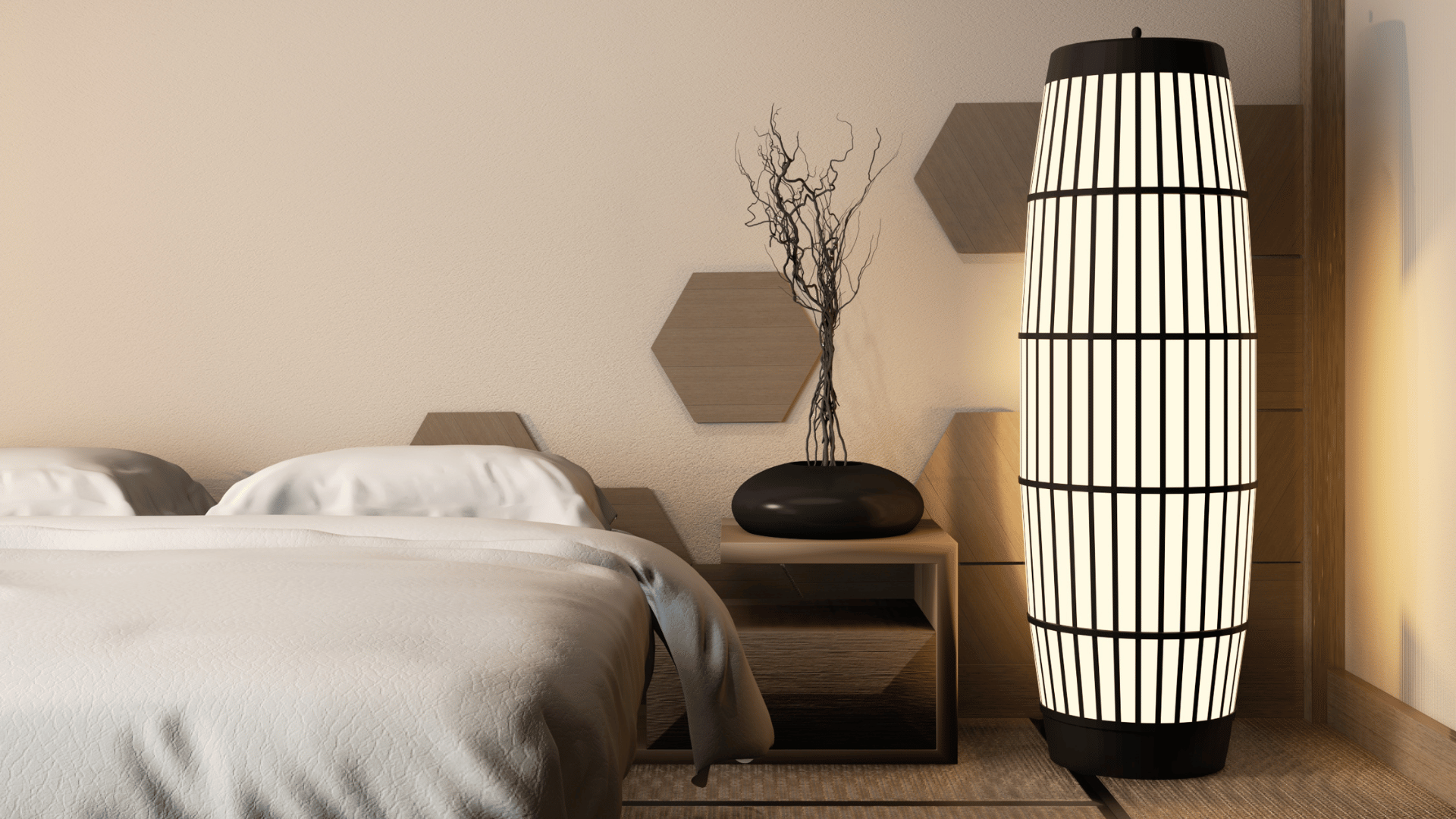In the bustling heart of Manila, finding solace in a peaceful and cozy sanctuary is a coveted escape. The Japandi interior design trend, a fusion of Japanese and Scandinavian styles, offers a harmonious blend of simplicity, functionality, and warmth. Transforming your living space into a Japandi-inspired sanctuary not only introduces a serene atmosphere but also reflects a timeless aesthetic. Let's explore how to achieve this transformation while drawing inspiration from Kizuna Heights in Taft Avenue, Malate, Manila.
Embrace Simplicity
Japandi: design style emphasizes simplicity in form and function. Start by decluttering your space, keeping only essential items that bring joy and serve a purpose. Opt for minimalistic furniture with clean lines, natural materials, and a neutral palette of colors like whites, grays, and light wood tones. Kizuna Heights, with its contemporary architecture and clean lines, provides a perfect example of how simplicity can create an inviting atmosphere.
Natural Elements
Incorporate natural elements to connect with nature and evoke a cozy and warm atmosphere of tranquility. Introduce indoor plants, bamboo furniture, or wooden accents to bring the outdoors inside. Kizuna Heights, nestled in the urban landscape, uses natural light and greenery in its surroundings to create a serene environment amidst the city hustle.
Neutral Color Palette
Choose a calming color palette inspired by nature. Combine soft, muted tones with more earthy tones and colors, such as greens, browns, and blues. This not only creates a visually pleasing environment but also promotes a sense of relaxation. Kizuna Heights, with its neutral facade, seamlessly integrates into the surrounding urban landscape while offering a tranquil haven inside.
Functional Furniture
Select furniture that is both stylish and functional. Japandi design focuses on pieces that serve a purpose without compromising aesthetics. Look for multi-functional furniture, like storage beds or modular shelving units, to maximize space efficiency. Kizuna Heights apartments showcase modern, contemporary designs that prioritize functionality over interior style, ensuring a seamless blend of form and utility.
Textural Harmony
Incorporate different textures to add warmth and depth to your space. Mix soft textiles like cotton and linen with natural textures such as rattan or raw wood. Kizuna Heights, with its attention to detail in interior finishes, provides inspiration and ideas on how textural harmony can elevate the interior designer's overall ambiance.
Soft Lighting
Create a cozy atmosphere with soft, diffused lighting. Opt for pendant lights, floor lamps, or string lights to enhance the whole room's ambiance. Kizuna Heights' thoughtfully designed lighting fixtures contribute to the overall calming atmosphere within the living room spaces.
Everything You Need to Know About Japanese Interior Design
Japandi interior design is a captivating fusion of Japanese and Scandinavian styles, combining the simplicity and functionality of both cultures. This new aesthetic trend has gained popularity for its harmonious balance between minimalism, natural elements, a warm atmosphere, and functionality. Here's everything you need to know about Japanese interior design:
Origins and Influences
- Japanese Aesthetics: Japandi draws inspiration from traditional Japanese design principles such as wabi-sabi (embracing imperfections), shibui (simple and unobtrusive beauty), and kanso (simplicity).
- Scandinavian Minimalism: The Scandinavian influence brings a sense of coziness, with an emphasis on light, neutral colors, and functional design.
Color Palette
- Neutral Tones: Japanese interiors typically feature a neutral color palette with a foundation of whites, grays, and beige. These colors create a serene backdrop and contribute to the overall simplicity of the design.
Minimalistic Furniture
- Clean Lines: Furniture in Japanese design boasts clean lines and simple forms. Avoiding excess ornamentation, pieces are functional and straightforward, often made from natural materials like wood.
- Functionality: The emphasis on functionality ensures that each piece serves a purpose, reflecting the practicality inherent in both Japanese and Scandinavian design.
Natural Elements
- Wood and Stone: Incorporate natural materials like light-colored wood and stone to bring warmth and a connection to nature. Wooden furniture, flooring, and accents play a significant role in achieving the Japandi look.
Textural Contrast
- Mixing Textures: Japanese design often incorporates a variety of textures to add depth and interest. Combine smooth surfaces with tactile elements like rattan, linen, or wool to create a visually appealing and comfortable environment.
Clutter-Free Spaces
- Decluttering: Keep spaces uncluttered by prioritizing essential items and creating storage solutions that blend seamlessly with the overall design. This aligns with the Japanese concept of ma, which values the beauty of space.
Indoor Plants
- Bringing Nature In: Introduce indoor plants to mimic the Japanese practice of shinrin-yoku (forest bathing) and create a sense of calm. Scandinavian design also embraces the presence of greenery to bring life to interiors.
Lighting Design
- Soft Lighting: Opt for soft, ambient lighting through pendant lights, floor lamps, or natural light sources. This contributes to a cozy atmosphere, enhancing the overall comfort of the space.
Art and Décor
- Subtle Accents: Select minimalist art and decor pieces to complement the simplicity of the design. Consider incorporating traditional Japanese elements like shoji screens or Scandinavian-inspired artwork.
Customization and Personalization
- Tailored Touches: While adhering to Japandi principles, don't shy away from adding personal touches. Customization allows the space to reflect your individual style while still maintaining the core aesthetic.
History of Japanese Design
The history of the Japandi style of design is a tale that weaves together the aesthetics and philosophies of two distinct cultures—Japanese and Scandinavian. The roots of the Japanese style of design can be traced back to the mid-20th century, when the principles of minimalism and functionality began to influence global design trends.
Japanese Influence
Traditional Japanese aesthetics
- Japanese design draws heavily from traditional Japanese aesthetics. Principles such as wabi-sabi, embracing imperfections and transience, and kanso, which emphasize simplicity and elimination of the unnecessary, form the foundation of this design trend.
Shibui and Zen Philosophy
- The concepts of shibui, representing simple and unobtrusive beauty, and Zen philosophy, promoting mindfulness and balance, further contribute to the subdued elegance inherent in Japanese design.
Spatial Awareness
- Japanese architecture and design have long valued spatial awareness, with a focus on creating open, airy environments. The concept of ma, the appreciation of the beauty of space, plays a crucial role in Japanese design by promoting a clutter-free and harmonious living space.
Scandinavian Influence
Post-War Scandinavian Design
- In the post-World War II era, Scandinavian design emerged as a response to the need for functional, affordable, and aesthetically pleasing furniture and interiors. Designers from countries like Denmark, Sweden, and Norway championed simplicity, craftsmanship, and the use of natural materials.
Hygge Philosophy
- The Scandinavian concept of hygge, which centers around creating a sense of coziness and comfort, resonates strongly with Japanese principles. The emphasis on creating warm, inviting spaces aligns seamlessly with the desire for a tranquil and cozy environment.
Emergence of Japandi Design
Globalization and Design Trends
- With the increasing interconnectedness of the world in the latter half of the 20th century, design trends began to transcend geographical boundaries. The simplicity of Japanese design and the functionality of Scandinavian design naturally converged as global influences shaped the design landscape.
Contemporary Fusion
- The term "Japan" itself is a portmanteau that reflects the fusion of these two design philosophies. It gained recognition in the early 21st century as designers and homeowners sought a harmonious balance between the timeless elegance of Japanese aesthetics and the functional, minimalist approach of Scandinavian design.
Characteristics of Japanese Design
Minimalistic Approach
- Japandi design is characterized by a minimalistic approach that emphasizes simplicity, clean lines, and uncluttered spaces.
Natural Materials
- The use of natural materials such as light wood, stone, and bamboo connects the design to nature, a common thread in both Japanese and Scandinavian design.
Neutral Color Palette
- A neutral color palette dominated by whites, grays, and earth tones creates a serene and timeless atmosphere.
Functionality and Comfort
- Japanese design prioritizes functionality without sacrificing comfort. Furniture is both practical and aesthetically pleasing.
Cultural Fusion
- The design style seamlessly blends elements from both cultures, offering a unique and balanced aesthetic that resonates with people seeking a tranquil and modern living environment.










